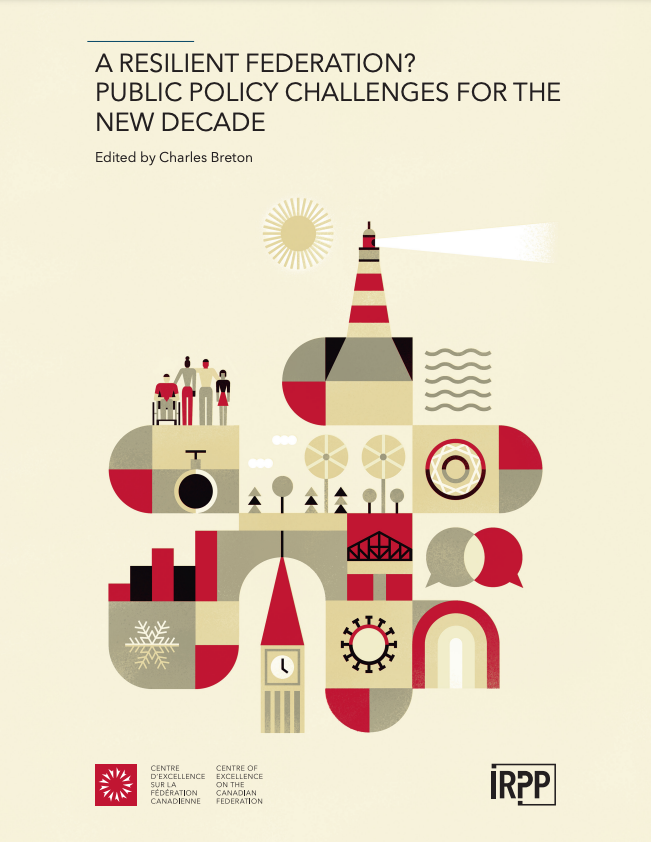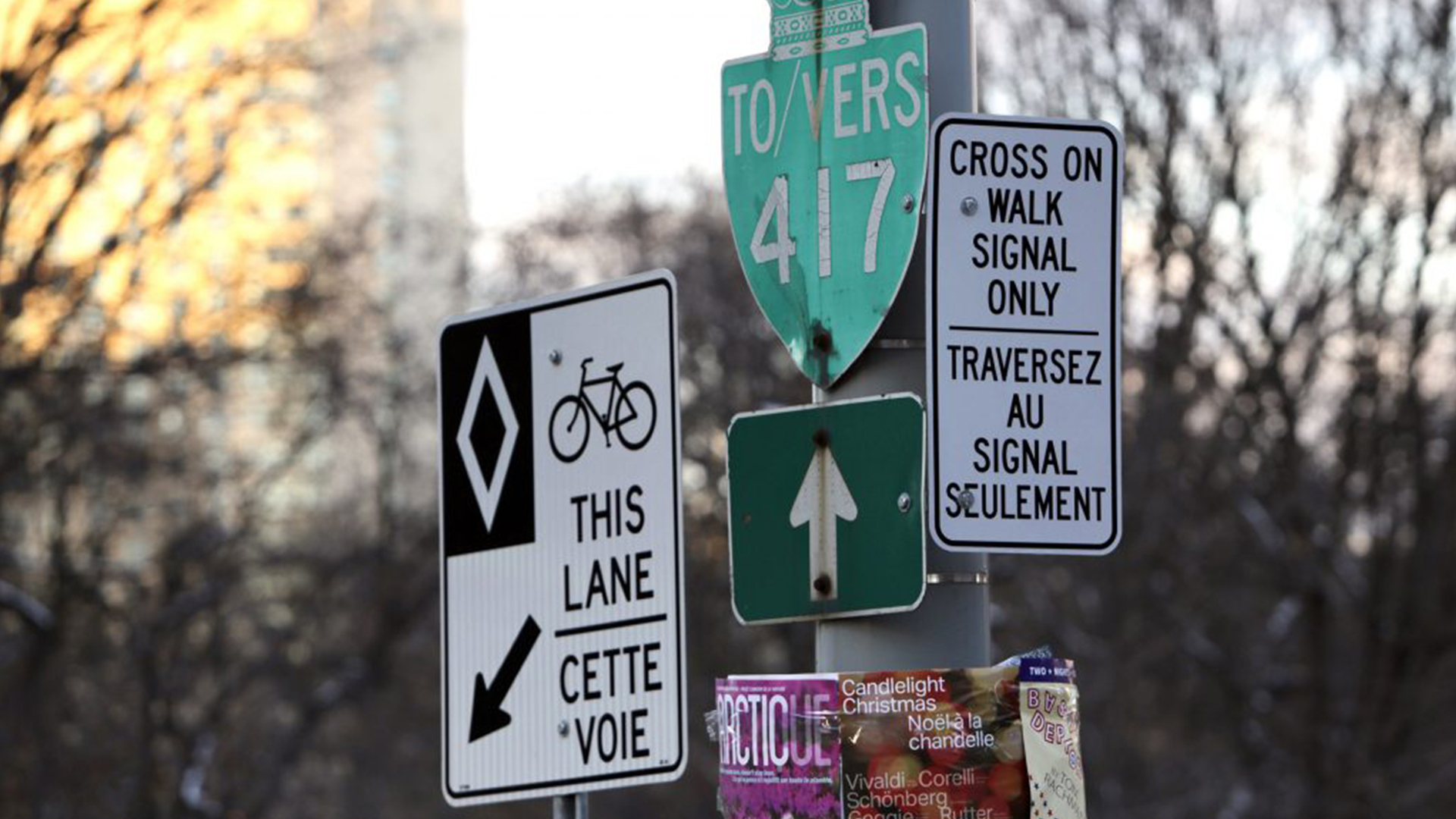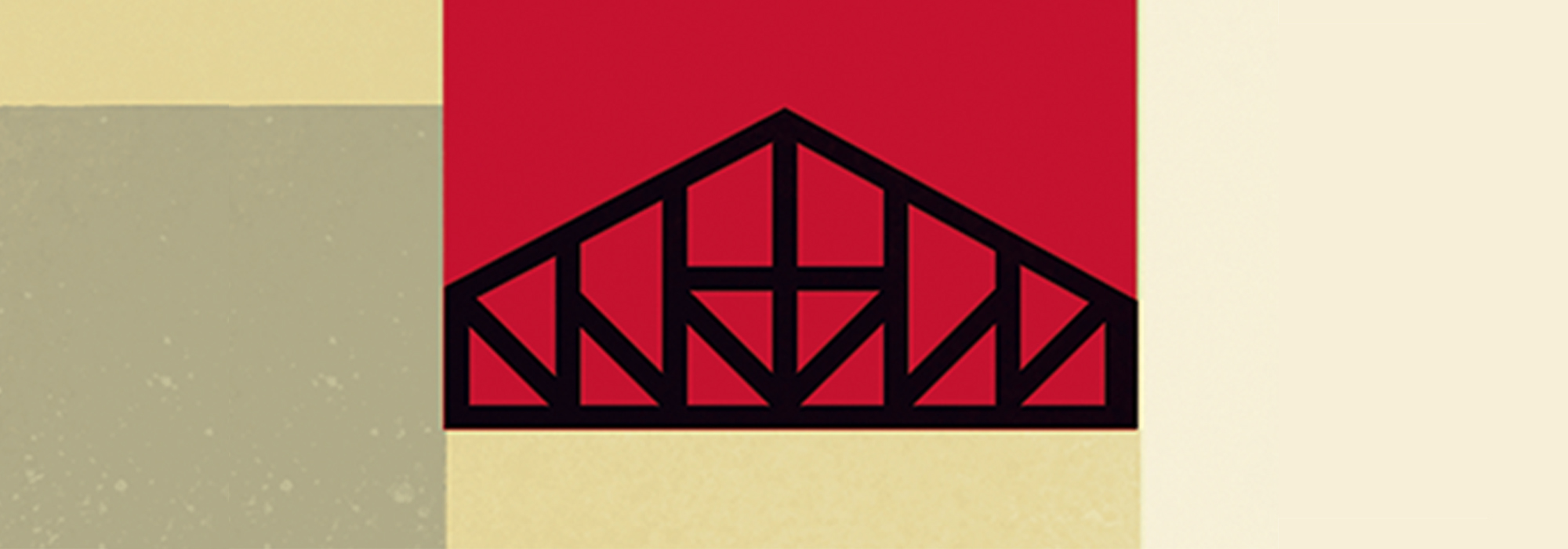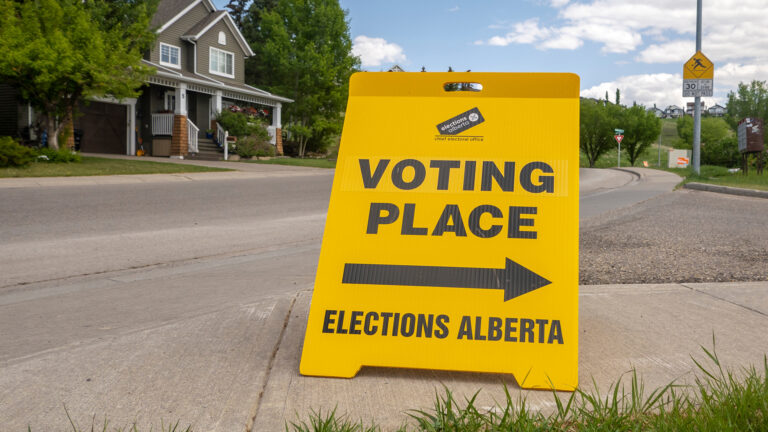Imagining the Canadian Language Regime of Tomorrow
Introduction
The Canadian federation was built on a compromise between two linguistic communities, anglophones and francophones. This compromise still exists today and is now part of our national fabric and identity, in addition to being enshrined in the Canadian Charter of Rights and Freedoms.
However, the effective recognition of these two languages, and especially of the French language, has always been a challenge for the federation, and increased protections for linguistic minorities have only been won through hard-fought battles. Over the past few decades, French has gradually been losing ground in Canada, so much so that there are now more speakers of non-official languages than French speakers. This trend feeds the fervour of detractors of official bilingualism. In addition, in the last few years, several voices have called for greater recognition of Indigenous languages in Canada. These pressures led to the adoption of the federal Indigenous Languages Act in 2019, but this legislation has been strongly criticized by some Indigenous communities and has yet to be implemented.
In light of these issues, and considering the budget cutbacks already announced in official languages programs and those that will follow in order to reduce the significant budget deficit caused by the COVID-19 pandemic,[1] how should the language regime evolve in order to meet the challenges of tomorrow’s federation? In order to answer this question, it is important to begin by considering the historical and contemporary forces at work in the formation and evolution of the language regime.
The Evolution of Canada’s Language Regime: A Story of Compromise
Canada’s relationship with the language issue is marked by historical tensions between anglophones and francophones. The various pre-Confederation colonial governments seesawed between oppression and protection of the francophone minority. The British North America Act (BNA Act) of 1867 reflected this tendency and represented a compromise between the various constituent units of the federation. The language issue would be an “ancillary” jurisdiction: the two orders of government could use it as they saw fit, in accordance with the powers granted to them in sections 91 and 92 of the BNA Act. This compromise was reflected in a number of responsibilities — which were not always assumed — of the Canadian state and some[2] of its constituent units toward their respective linguistic minorities in the legislative and judicial domains. In education, the constitutional right to maintain denominational schools was interpreted as a guarantee regarding the language of instruction. But many provinces soon restricted or even eliminated access to French-language education. It goes without saying that Indigenous languages did not enjoy any protection at that time. On the contrary, colonialist measures and institutions such as residential schools were intended to prevent the transmission of Indigenous languages to younger generations.
The compromise of 1867 did not settle the language issue in the country — far from it. Many language crises followed the BNA Act. From the Métis rebellion led by Louis Riel to the crises of francophone schools outside Quebec, a number of events caused resentment among francophones, who were often deprived of education, public services, public service positions and political representation.
This resentment contributed to the rise of nationalism in Quebec and demands for recognition of francophones outside Quebec. In response, Canada passed the Official Languages Act (OLA) in 1969. That same year, New Brunswick passed its own Official Languages Act, establishing official bilingualism in the province. These laws mandated their respective public services to serve citizens in both official languages and also led to the adoption of measures to ensure fair representation of both linguistic communities in public institutions. Since 1969, amendments have been passed to make Canada’s and New Brunswick’s language obligations more robust (the entrenchment in the Constitution in 1982, the creation of offices of official languages commissioners and active offer measures, among others).
Challenges Facing Canada’s Language Regime Today
The language regime implemented from the 1960s onwards has had several positive effects. First, it contributed to the expansion of French-language services and to a significant increase in the representation of francophones in the federal public service. Second, in the wake of the adoption of the Constitution Act, 1982 and various subsequent decisions of the Supreme Court of Canada, access to French-language education outside Quebec has been expanded considerably. Third, despite the acrimonious debates of the 1960s surrounding the OLA, the level of social acceptance of the Act has risen significantly.[3] Over the years, a number of surveys have shown strong support for the principle of official bilingualism and its importance as a cornerstone of Canadian identity.[4]
Nevertheless, the implementation of Canada’s language regime brings its own set of challenges. On the one hand, given the “ancillary” constitutional nature of language as a jurisdiction, language protections vary widely from one province and territory to another. In addition, evident shortcomings persist in the way the regime has been implemented. For example, the guarantee for federal public servants to work in the official language of their choice often comes up against the pervasive use of English in the federal public service. Part VII of the OLA, which sets out the federal government’s obligation to enhance the vitality of the English and French linguistic minority communities in Canada and support and assist their development, was recently gutted by the Federal Court for being too vague.[5]
At the same time, individual bilingualism is advancing at a snail’s pace, despite the proliferation of immersion programs across the country. In 1961, 12.2% of Canadians said they could carry on a conversation in both official languages. By 2016, this proportion had risen to 17.9%, an increase mainly due to francophones learning English in Quebec, where bilingualism has almost doubled in 50 years.[6] Although the objective of the OLA was never to make Canada a country of bilingual individuals, the slow increase in individual bilingualism is seen by many as a failure of the language regime.
In addition, the social acceptability of bilingualism seems to be gradually eroding. Today, only slightly more than half of Canadians believe that bilingualism is important,[7] and nearly one-third of Canadians would like English to be the only official language in the country.[8] Regional variations exist, and support for bilingualism tends to be lower in Western Canada. In our view, this questioning of the language regime stems from several elements.
First, it is undeniable that the major changes to the language regime were directly linked to attempts to curb the independence threat that was present in Quebec from the 1960s to the early 2000s. However, this threat is now only a shadow of its former self: only one-quarter of Quebecers would like to see Quebec separate today.[9] Recognition of the French fact is therefore no longer perceived as an imperative for national unity.
Second, Canada’s demographics are changing. Today, 1 out of every 5 Canadians were not born in Canada, and there are now more allophones than francophones (allophones make up 22.3% of the population; francophones, 21.4%).[10] While there are no major differences between anglophones and allophones in terms of support for bilingualism,[11] the increasing weight of the allophone group is regularly used as an argument to call into question the relevance or legitimacy of the language regime.[12]
Third, the emergence of populist movements on the electoral scene in some provinces has prompted a questioning of policies for the recognition and protection of francophone minority communities. For example, the People’s Alliance of New Brunswick criticizes linguistic duality at every turn on the pretext of “common sense,” and in Ontario, Premier Doug Ford’s Progressive Conservative government made Franco-Ontarians the first victims of its budget cuts.
Furthermore, Canada is now faced with a new issue: the recognition, integration and protection of Indigenous languages. This is a monumental challenge, given the large number of Indigenous languages in Canada (there are more than 70), Indigenous peoples’ mistrust of the Canadian state because of colonialism and the precarious state of the majority of these languages. Indeed, only six of them are not in imminent danger of extinction: Inuktitut, Inuinnaqtun, Cree, Atikamekw, Tlicho and Naskapi.[13] The issue, then, is not only to protect Indigenous languages but also to revitalize them, since merely transmitting them from one generation to the next will not be sufficient to ensure their survival. In the case of languages whose extinction is inevitable, documentation for archival purposes is also a priority.
The Indigenous Languages Act mandates the federal government to support the efforts of Indigenous communities to reclaim and revitalize their languages to ensure their survival. Although the government prides itself on having drafted the Act in collaboration with Indigenous peoples, the legislation has been widely criticized for its non-binding nature and the weakness of the obligations it imposes on the federal government. In addition, although the Act provides for the creation of a new position of Indigenous languages commissioner, the position is still vacant.
Challenges to the OLA and the necessary, albeit belated and too timid, addition to the Canadian language regime of measures to protect Indigenous languages show that debates on language issues are destined to continue. So what kind of language regime will Canada need in order to meet the challenges of tomorrow, and how will it get there?
Reimagining Canada’s Language Regime
Given the tradition of compromise in the history of the language regime and the step-by-step approach that has characterized the evolution of Canadian language rights and legislation, a rapid and complete overhaul of the Canadian language regime is neither possible nor even desirable. However, we believe that a number of constitutional, legislative and policy changes are necessary.
One of the promises made by the Liberals in the 2019 election was to overhaul the OLA. The 50th anniversary of the Act has prompted a number of reflections, on the part of both legislators and civil society, on ways to improve the effectiveness of this quasi-constitutional statute. Among the most important proposals are the revision of Part VII of the Act[14], the creation of an official languages tribunal to deal with serious or recurrent cases, the adoption of regulations on active offer, the strengthening of the powers of the Office of the Commissioner of Official Languages, the inclusion of an “official languages lens “ in public policy analysis based on the gender-based analysis plus (GBA+) model, and the entrenchment of a duty to consult official language minority communities.[15] The latest Speech from the Throne, presented on September 23, fell short of promising an overhaul of the OLA, but vowed to “strengthen” it while “taking into consideration the unique reality of French,” promising to protect and promote the country’s minority language, even in Québec, where it is the language of the majority.[16] What this commitment means in concrete terms for the federal government, which historically has scrupulously protected the legislative symmetry between the two official languages while enforcing “substantive equality” in its policies, remains to be seen. The same could be said of the Speech from the Throne’s broad commitment to reconciliation with Indigenous peoples with respect to Indigenous languages.
Another short-term goal for the federal government will be to implement and enhance the Indigenous Languages Act. While the first iteration of the Act is a step in the right direction, it does not adequately address the demands of Indigenous communities. For example, in Nunavut, where Inuktitut is the mother tongue of 65.3% of the population,[17] the federal government should commit to provide services to the population in that language. Providing federal services in other Indigenous languages “where numbers warrant” would be a logical further step as this legislation evolved. In our view it is also necessary to include legislative or constitutional protection for education in these languages similar to those in section 23 of the Charter, and to provide the financial means to make that protection a reality. It will also be important to study the broader impact of the Indigenous Languages Act on Canada’s language regime. The new legislation will not be implemented in a vacuum. We could see, for example, instances of policy learning between official language minority communities and Indigenous communities in the area of language transmission and retention.
In addition, the importance of Canada’s language regime must be conveyed more effectively to the English-Canadian majority in order to ensure its sustainability. Over the medium term, it will be necessary to broaden and improve access to French language learning for interested anglophones and allophones, as the inability to acquire the other official language is a source of frustration for many people. This frustration is fodder for the detractors of the current language regime because it creates a perception of injustice, particularly with respect to social mobility and access to jobs in the federal public service. A major reinvestment in immersion and the creation of opportunities to learn the other official language for all Canadians — including for new Canadians, who often deplore the lack of such programs — must be a centrepiece of this undertaking. Without going as far as to reform the system so that it requires every Canadian to be bilingual, the opportunity to become bilingual should at least be available to all.
Eventually, the evolution of the language regime should also involve changes to the structures of our federal institutions. Think of the debates surrounding a possible reform of the Senate — there have been several calls over the last decade for guaranteed representation of official language minorities in that chamber to be enshrined in legislation[18] — or the issues of bilingualism and Indigenous representation that resurface every time a Supreme Court of Canada justice retires.[19] The political appetite of our elected officials for such changes does not seem to be there at present, but these structural representation issues are likely to resurface at some point.
Finally, the transformation of Canada’s language regime requires promotion, which in turn requires political leadership. Concrete actions by our elected officials, starting with the Prime Minister, that demonstrate the importance of official and Indigenous languages are essential in order to remind Canadians that they are constitutive elements of Canada’s national identity. As the regime evolves and attempts are made to decolonize it, its promotion is a necessary step to ensure that Canadians can understand and approve of the existing regime, and thus be better prepared for future reforms.
[1] The uncertain future of the Campus Saint-Jean in Alberta is an example of the impact of these cutbacks.
[2] With the BNA Act, Quebec was created as a bilingual province. Manitoba also became a bilingual province when it joined Confederation in 1870. The other provinces had no obligations toward their francophone minorities.
[3] Office of the Commissioner of Official Languages, “Official Languages and Bilingualism Survey Research Presentation” (2016), https://www.clo-ocol.gc.ca/en/publications/other/2016/official-languages-and-bilingualism-survey-research.
[4] A. Parkin and A. Turcotte, Bilingualism: Part of Our Past or Part of Our Future? (Ottawa: Centre for Research and Information on Canada, 2004).
[5] Office of the Commissioner of Official Languages, Fédération des francophones de la Colombie-Britannique v. Canada (Employment and Social Development), 2018 FC 530, https://www.clo-ocol.gc.ca/en/language-rights/court-decisions/federation-des-francophones-de-la-colombie-britannique-v-canada.
[6] M. Turcotte, “Results from the 2016 Census: English-French Bilingualism among Canadian Children and Youth” (Ottawa: Statistics Canada, 2019), https://www150.statcan.gc.ca/n1/pub/75-006-x/2019001/article/00014-eng.htm.
[7] Léger, Report: Federal Politics (March 22, 2019), https://leger360.com/wp-content/uploads/2019/03/Federal-Politics-March-22-2019-1.pdf.
[8] Léger, Report: Federal Politics (February 1, 2020), https://leger360.com/voting-intentions/federal-politics-february-1st-2020/.
[9] K. Braid, “Canadians across All Regions Feel Country More Divided than Ever” (Ipsos, November 5, 2019), https://www.ipsos.com/en-ca/news-polls/Canadians-Across-Regions-Feel-Country-More-Divided-than-Ever.
[10] Statistics Canada, Proportion of Mother Tongue Responses for Various Regions of Canada, 2016 Census (2017), https://www12.statcan.gc.ca/census-recensement/2016/dp-pd/dv-vd/lang/index-eng.cfm.
[11] L. Turgeon, A. Bilodeau, A.-G. Gagnon, A. Henderson and S. White, “Attitudes toward Official Bilingualism in Multilingual States: the Canadian Case,” paper presented at the meeting of the International Political Science Association, Montreal, July 24, 2014.
[12] Based on data from their provincial diversity study, Turgeon et al. (2014) report that 66% of anglophones and 66% of allophones outside Quebec say it is important to preserve English and French as the country’s two official languages.
[13] H. Choquette, “The Constitutional Status of Aboriginal Languages in Canada,” doctoral thesis, Faculty of Law, Queen’s University (2016).
[14] The decision in Fédération des francophones de la Colombie-Britannique v. Canada (Employment and Social Development), 2018 FC 530, highlighted the need for a review of the wording of Part VII of the OLA or, at the very least, for a regulation to clarify its scope.
[15] Standing Senate Committee on Official Languages, Modernizing the Official Languages Act. The Views of Federal Institutions and Recommendations (Ottawa, Senate of Canada, 2019), https://sencanada.ca/content/sen/committee/421/OLLO/reports/ModernOLAFedInst_2019-06-13_E_Final.pdf; Fédération des communautés francophones et acadienne du Canada, La FCFA passe à l’action : Proposition d’un nouveau libellé de la Loi sur les langues officielles (2019), https://fcfa.ca/wp-content/uploads/2019/03/La-FCFA-passe-%C3%A0-laction_2019-03-05.pdf.
[16] Government of Canada, Speech from the Throne (Ottawa, 2020).
[17] J.-F. Lepage, S. Langlois and M. Turcotte, “Study: Evolution of the Language Situation in Nunavut, 2001 to 2016,” Statistics Canada, (2019), https://www150.statcan.gc.ca/n1/daily-quotidien/190709/dq190709b-eng.htm.
[18] C. Tardif and C. Terrien, “Senate Reform and Francophone Minorities,” Canadian Parliamentary Review (Spring 2009); L. Cardinal and S. Grammond, Une tradition et un droit : Le Sénat et la représentation de la francophonie canadienne (Ottawa: University of Ottawa Press, 2017).
[19] L. Chartrand, B. Feldthusen and S. Han, ”Reconciliation and Transformation in Practice: Aboriginal Judicial Appointments to the Supreme Court,” Canadian Public Administration, 51 (1) (2008), 143-53; M. Doucet, “Le bilinguisme : une exigence raisonnable et essentielle pour la nomination des juges à la Cour suprême du Canada,” University of New Brunswick Law Journal, 68 (2017), 30-35; for a discussion of the reconciliation of bilingualism and Indigenous representation on the Supreme Court of Canada, see M. St-Hilaire, A. Wawanoloath, S. Chouinard and M.-A. Gervais, “The False Francophone-Indigenous Conflict over SCC Judges,” Policy Options (December 18, 2017), https://policyoptions.irpp.org/magazines/december-2017/the-false-francophone-indigenous-conflict-over-scc-judges/.
This essay was published as part of the inaugural essay series for the Centre of Excellence on the Canadian Federation, under the direction of Charles Breton. Editorial coordination was done by Étienne Tremblay, proofreading by Angelia Wagner, and production and layout by Chantal Létourneau and Anne Tremblay.
This essay was translated from French by John Detre. It is also available in French under its original title: Imaginer le régime linguistique canadien de demain. The original version was copy-edited by Étienne Tremblay and proofread by Paul Lafrance.
Stéphanie Chouinard is an assistant professor in the Department of Political Science at Royal Military College (Kingston) and affiliated at Queen’s University. Her research interests focus on federalism, minority language rights and Indigenous rights. She recently published on the evolution of Canadian jurisprudence on linguistic rights and its impact on the federal regime.
Luc Turgeon is associate professor at the School of Political Studies of the University of Ottawa. His research is focused on public opinion toward immigration, bureaucratic representation of minorities and the politics of multinational states. His most recent article published in the journal Politics, Groups and Identities is on attitudes toward bilingualism in Canada (with Antoine Bilodeau, Stephen E. White, Ailsa Henderson and Alain-G. Gagnon).
To cite this document:
Chouinard, Stéphanie and Luc Turgeon. 2020. Imagining the Canadian Language Regime of Tomorrow, Essay no. 5, Montreal, Institute for Research on Public Policy.
The opinions expressed in this essay are those of the authors and do not necessarily reflect the views of the IRPP or its Board of Directors.
If you have questions about our publications, please contact irpp@irpp.org. If you would like to subscribe to our newsletter, IRPP News, please go to our website, at irpp.org.
Illustrator: Luc Melanson











